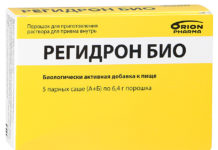Horseradish, combined with many dishes of various cuisines, has long been a favorite seasoning among the people. At the same time, not many people know what benefits and harm to health are from it. Horseradish refers to perennial vegetable crops, is considered a powerful phytoncid. Get to know him better.
Material Content:
Horseradish: useful properties
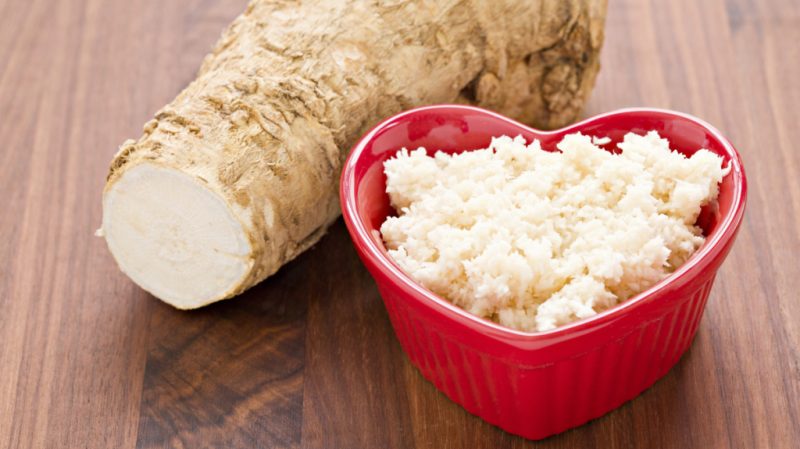
This plant has been growing in one place for many years, with a strong root system and strong foliage. The taste of horseradish has a sharp and piquant shade with a bright and rich aroma. Useful properties of horseradish are filled with both the root and the leaves, which will be discussed later.
Root
The horseradish root contains fiber, vitamins - C, E, PP and group B (1,2,3,6), mineral elements (magnesium and calcium, potassium and iron, phosphorus and sodium with sulfur), volatile and steroid, carbohydrates and nitrogenous substances.
Such a rich composition gives this part of the plant hemopoietic, anti-zingotic, expectorant, choleretic and diuretic properties, as well as it improves appetite in its absence and is very useful for people with gastritis with low acidity, stimulating the stomach.
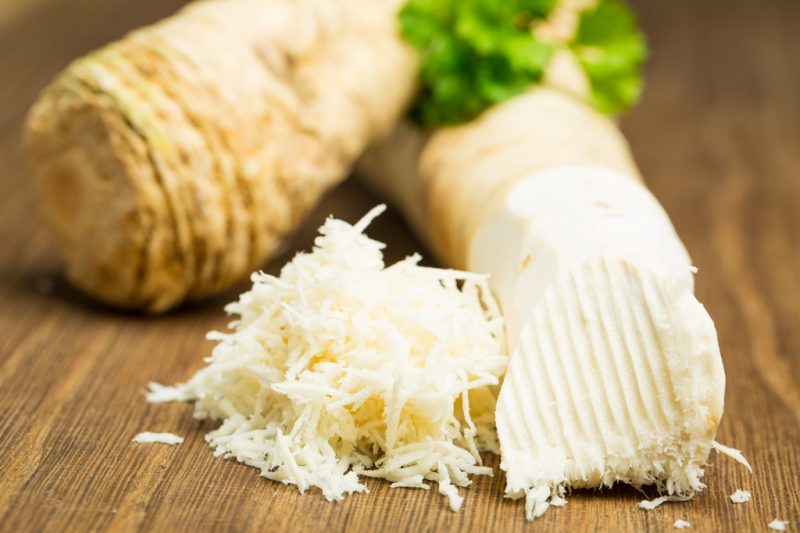
It is indicated for respiratory ailments due to the antimicrobial and anti-inflammatory effect.
Horseradish is also recommended for those who suffer from sugar sickness, intestinal lethargy, impotence, liver pathologies, high blood pressure and kidney stones.
With the help of lotions from horseradish root, wounds, bruises, cuts, dermatitis and fungal skin diseases are disinfected.Grated root can be used as a mustard for health problems such as backache, sciatica, rheumatism, neuralgia, hypothermia and lumbar pain.
Infusion on the water eliminates age spots on the body and freckles.
Leaves
Horseradish leaves are also filled with a lot of useful qualities for our body. They contain water with dietary fiber, ash and many vitamins with micro and macro elements.
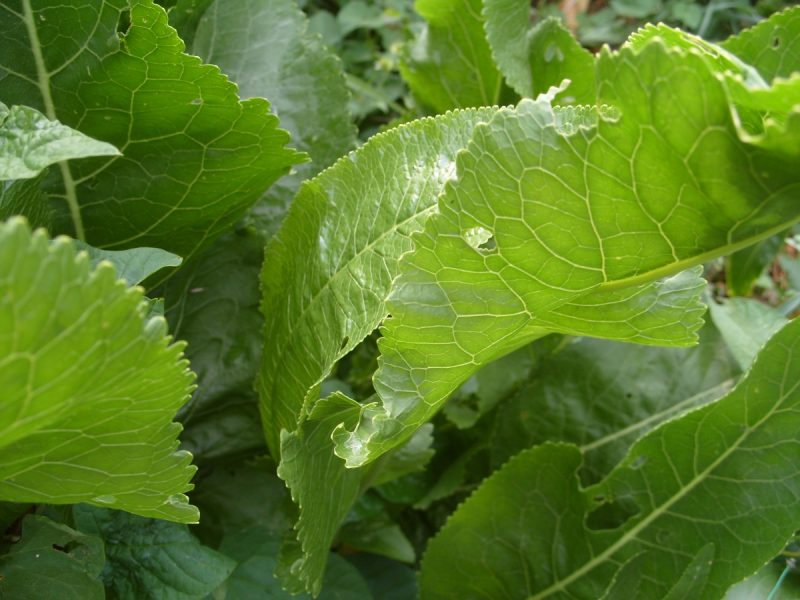
Allyl oil inside the foliage of the plant effectively enhances the production of gastric juice, awakening appetite.
Important: allyl oil in large volumes is very dangerous.
The ground part of horseradish has a positive effect on the immune system, protects the nervous system from the effects of stress in our lives and is a powerful antioxidant.
This part of horseradish is filled with volatile and essential oils, which act as antibacterial and anti-inflammatory, being a natural antibiotic.
Horseradish has a preventive effect against the development of scurvy, combating vitamin deficiency. At the same time, the leaves of the plant help to relieve cough, have a beneficial effect on the functioning of the CCC, the genitourinary sphere, and indeed on the whole body, improving well-being.
What are the benefits for the human body
The benefits of horseradish extend to many diseases that affect both men and women:
- Colds and inflammations - the plant is able to destroy pathogenic viruses with bacteria, helping sputum discharge from the bronchi.
- Gastric - various disorders and gastritis (low acidity).
- Dental - caries with stomatitis, gingivitis with periodontal disease.
- Respiratory organs - tonsillitis with laryngitis, sinusitis with bronchitis and pulmonary tuberculosis.
- Hepatic and biliary tract - hepatitis with inflammation of the biliary tract.
- Joint - arthritis of the knee with rheumatism and radiculitis.
- Neurological - headaches with migraine and neuralgia.
- Gynecological - menstrual disorders.
- Male genitalia - weak potency.
- Cutaneous - pigmentation with eczema and purulent wounds.
It is interesting:than gargling with angina
The benefits of horseradish extend to infectious pathologies of the urinary tract, cystitis, gout. And the positive effect of the plant is on the heart with blood vessels and physical with mental overstrain.
How to apply
Horseradish has long been used as a cure for many ailments of the body and soul as a stimulant, antiseptic, as well as anti-scurvy, anti-inflammatory, anthelmintic and expectorant.
In folk medicine
Radiculitis is treated with the root of the plant - finely grate it, mix with sour cream (oily) - 2/1, respectively, and attach to the problem place for 40 minutes. Repeat up to 3 times a day for 3 consecutive weeks.
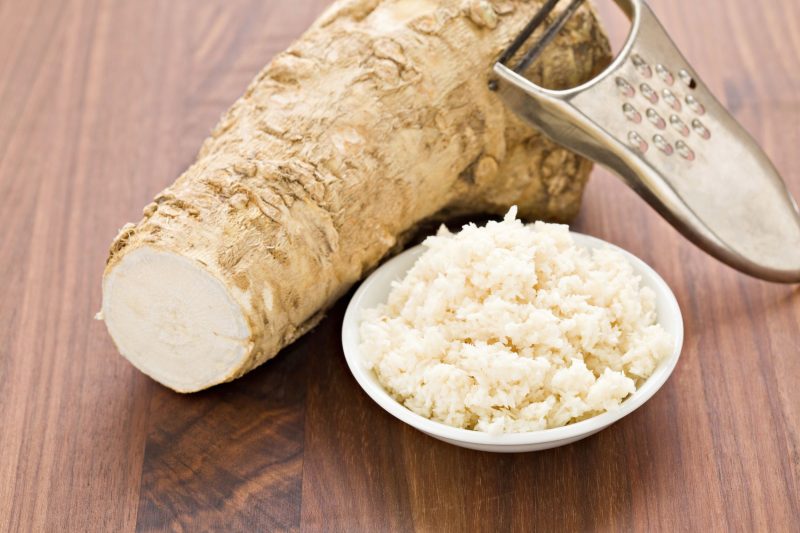
To reduce the cholesterol level, pass through a meat grinder 100 g horseradish root with one lemon in the peel and 100 grams of garlic. Dilute the resulting slurry with boiled water 1/1 and place in a cool place for a day. The medicine is taken in the mornings and evenings before meals for 40 minutes in the amount of 1 tablespoon with top.
It is interesting:horseradish - classic cooking recipe
To restore the liver with cirrhosis, take seasoning leaves and nettles (300-400 g each), grate and squeeze the juice, stirring honey. Store in the refrigerator under the lid. Drink 0.5 cups up to 5 times a day for 1 month.
Traditional healers recommend using horseradish to remove excess fluid from the body and get rid of edema, as well as sand in the kidneys, for which decoctions are prepared using leaves.
In cosmetology
Since horseradish contains essential oils, the plant helps to effectively get rid of unnecessary pigmentation on the body, including freckles, relieve swelling and restore skin freshness.
Flavonoids are in the plant sap, stopping the processes of cell aging.
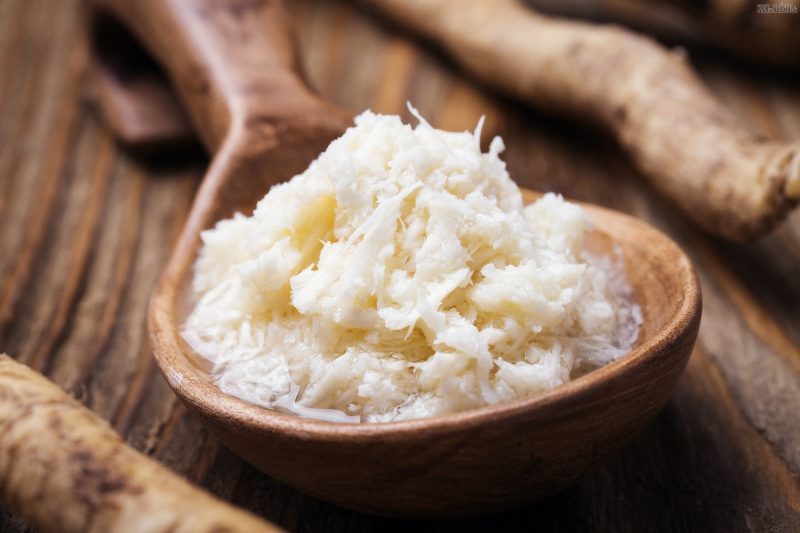
Vegetable oils are “involved” in softening the skin, maintaining elasticity and providing a protective effect against solar radiation.
Resins of plant origin in horseradish return the old youth to ladies, eliminating the appearance of fine wrinkles, and tightening the skin. At the same time, saponins in the sap of the plant increase cellular resistance to the harmful effects of the environment.
For facial skin care, the gruel of the plant is used - let it brew for 5-7 minutes to eliminate bitterness. Juice can also be used by squeezing it with gauze.
Horseradish helps to care for your hair. Why do you need to prepare a mask? Take a large spoonful of fat sour cream, the same amount of vegetable oil and 1 horseradish root (mashed), put everything together and apply on the scalp, tied with polyethylene from above, and put on a warm towel or scarf for 40 minutes. After the set time, rinse your hair with shampoo.
In cooking
Horseradish has long taken its place on our tables, as a seasoning for various dishes and preservation. The leaves of the plant serve as an excellent tool for brines and marinades, and the powder is used as seasoning.
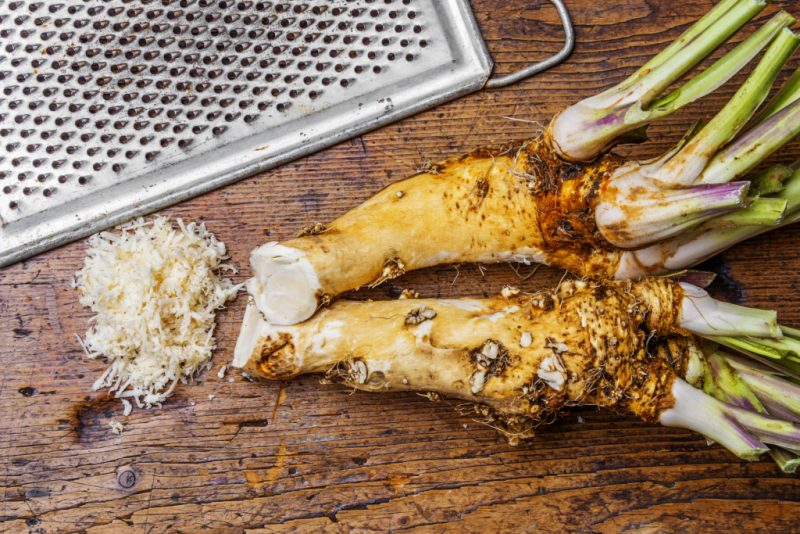
Here is one of many recipes - 1 kg of tomatoes with 3 peeled roots and 15 cloves of garlic, pass through a meat grinder, add a large spoonful of sugar and salt to taste, thoroughly mixed. The resulting composition can immediately be consumed or rolled up in jars.
Contraindications and possible harm
Not every organism perceives this spice normally. It can burn, which is why you must be careful when using it without affecting the skin for a long time.
It is advisable to use horseradish for people who have a healthy digestive tract, and even then in small quantities. It is also possible to increase blood pressure, pain in the stomach, cough reflex, the appearance of tears and, in some cases, bleeding.
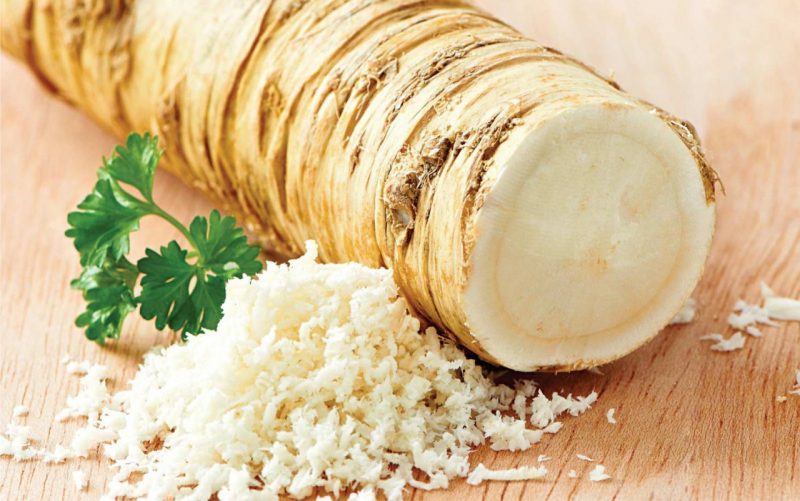
You can not use the plant if you have pathologies of the liver and kidneys, including organs of the gastrointestinal tract in chronic form.
It is contraindicated to eat horseradish with the following diseases:
- Colitis and excess hydrochloric acid.
- Intestinal disorders in acute form.
- Pregnancy and lactation.
- Individual intolerance to the product.
You should not use seasoning for ailments that are aggravated by its intake, which happens with gastric pathologies, even in remission.
Winter horseradish recipes
To make the horseradish tasty and healthy, it is important to use high-quality products.
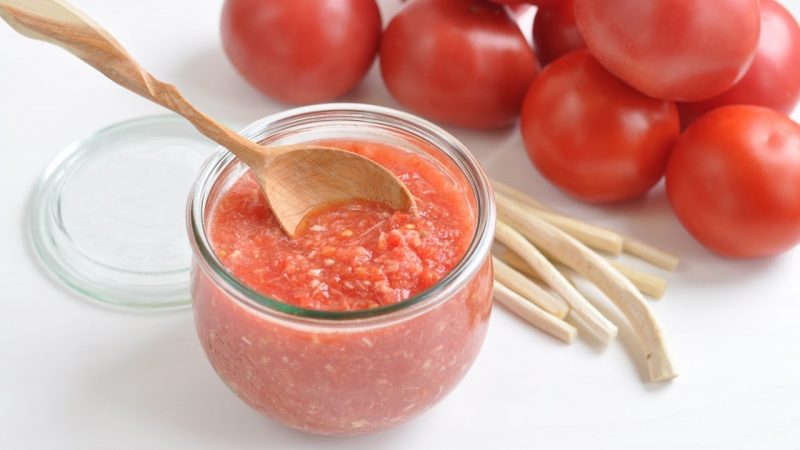
The classic recipe consists of the root of the plant, tomatoes and garlic:
- grind separately in a meat grinder 2 kg of tomatoes, 400 g of horseradish and 10 garlic;
- mix everything and add a little salt, sending the composition to the refrigerator for 30 minutes;
- pour into sterilized and dried glass jars.
To protect the food from mold, pour a small amount of vegetable oil on top of it or grease the lid with mustard before rolling up.
You can cook with aspirin, which will give more freshness to the sauce. The recipe is similar to the previous one, only 1 tablet of aspirin is added to the finished dish.
Sauceless horseradish is cooked as follows - using a meat grinder, scroll a bucket of tomatoes, 3-5 pods of hot pepper, 0.5 kg of garlic, 400 g of horseradish (roots), salt, stir and pour into a 12 liter bucket, leaving a little space on top for the fermentation process. Cover with something on top and leave alone for 5 days. As soon as the fermentation process stops, the drink can be considered ready - pour over banks and put in a cool place for storage.
If you are not completely sure of your health, do not be too lazy to visit a specialist and get advice. This will protect against the undesirable consequences of the misuse of this extraordinary plant. Health to you and your loved ones!







